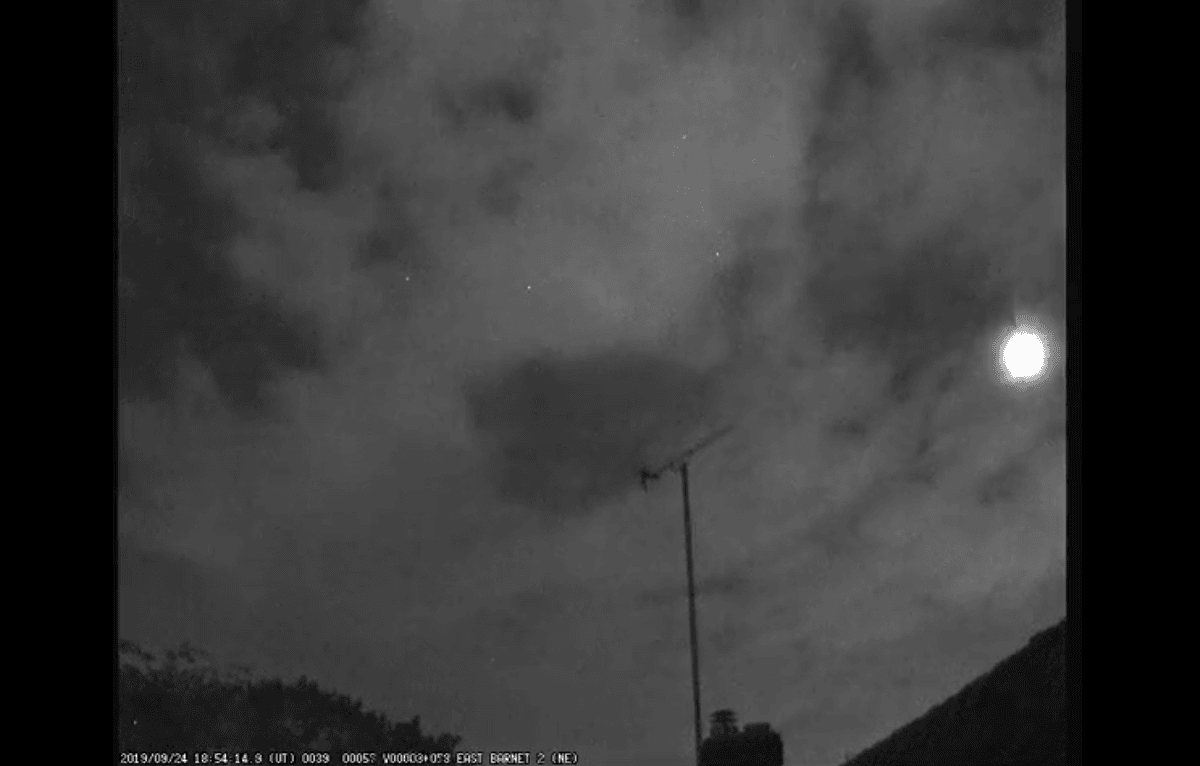Last night, many Londoners spotted a meteor as it was streaking across the night sky. The bright fireball illuminated the sky and many viewers were quick to take their observations to Twitter. Since the fireball was spotted in London, the UK Meteor Observation Network has confirmed it on its official Twitter account, calling others to report their sightings.
Last night in London it was cloudy. However, the bright London meteor was able to easily illuminate the gloomy capital on Tuesday, Sep. 24, at 7:54 pm BST. The fireball was also filmed by the UK Meteor Observation Network that shared the video, inviting its followers to share and report on the sightings. The fireball was recorded to appear over the East Barnet area in North London.
One of the Twitter users, Chris Cenci, replied that he was onboard a flight when he spotted the bright London Meteor streak across the sky. In his reply on Twitter, he also showed the map of his flight in which he pin-pointed the location and direction of the fireball, at his “best guess.”
I was flying UAL934 and saw it just before landing. The blue line is my best guess as to location and direction (SE to NW). So cool!! pic.twitter.com/7As36j1uCf
— Chris Cenci (@pilot8766) September 24, 2019
Other users who also took the time to reply also reported that the bright streaking meteor was spotted over West Horsley, Buckinghamshire, Kingston and other locations. Others who reported on their sightings described the meteor to be green in color and cast a bright green light.
I saw that too in Kingston, it was green and looked like a firework travelling horizontally with no noise.
— Jo (@JoKellard) 24 September 2019
I saw that, was out walking in Brondesbury on a nice dark road. It was green in colour!
— Nathan (@NathNath29) 24 September 2019
The UK Meteor Observation Network also invited its followers to report the meteor sighting on the official website.
Seeing a bright meteor during the night shouldn’t surprise you. The annual Draconid meteor shower should be active between Oct. 6 and Oct. 10, reaching its peak on Oct. 7. That said, early meteors often burn up in the atmosphere, leaving a streak like the London meteor.
What are meteors?
Meteors or fireballs we see across the night sky are often associated with “shooting stars,” that we make wishes on. There are several names that describe the same object, according to NASA.
Space rocks that travel in space, ranging from dust grains to smaller asteroids are called Meteoroids, and once they enter Earth’s atmosphere, or that of another planet, they are called meteors, and they accelerate in speed and burn up. They get the fireball or a “shooting star” hue which helps us recognize it as meteors.
Given that Earth’s atmosphere has harsh conditions for objects that usually end up burning up while entering it, those that survive the burn and hit the ground are called meteorites.
When the intensity and quantity of meteors rapidly increases, we call them meteor showers. Most meteor showers occur annually when our planet passes through the space debris left behind from comets and asteroids that passed that way. Most of the time, meteor showers are named after the constellations from which they appear to be coming from when the Earth passes through the space debris.
Some of the most popular and massive meteor showers, often praised and observed by both stargazers and professionals alike, are the Perseid meteor shower that peaks every mid-August and the Geminid meteor shower that peaks every December, leaving dozens of bright fireballs in the night sky.





